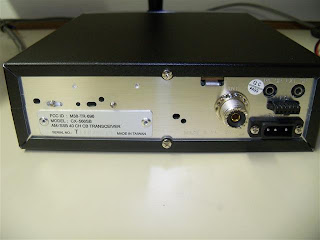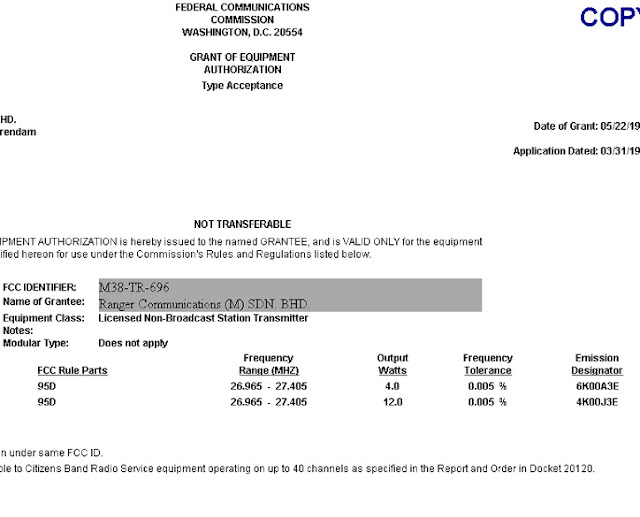If your willing to risk not complying with the FCC's rules and regulations, know the penalties. Operating without a license or transmit a false distress call, you could be hit with fines that total many thousands of dollars. There are a lot of cheap radios that operate in the GMRS bands. Did you know that those radios require and FCC license. The fines are not arbitrary at all. Section 1.80 covers what the penalties. Below is an excerpt:
[From CFR 47 section 1.80]
**Fines can be levied on a per day basis and/or per violation**
Construction and/or operation without an instrument of authorization
for the service $10,000
Failure to comply with prescribed lighting and/or marking 10,000
Violation of public file rules 10,000
Violation of political rules: reasonable access, lowest unit charge,
equal opportunity, and discrimination 9,000
Unauthorized substantial transfer of control 8,000
Violation of children's television commercialization or programming
requirements 8,000
Violations of rules relating to distress and safety frequencies 8,000
False distress communications 8,000
EAS equipment not installed or operational 8,000
Alien ownership violation 8,000
Failure to permit inspection 7,000
Transmission of indecent/obscene materials 7,000
Interference 7,000
Importation or marketing of unauthorized equipment 7,000
Exceeding of authorized antenna height 5,000
Fraud by wire, radio or television 5,000
Unauthorized discontinuance of service 5,000
Use of unauthorized equipment 5,000
Exceeding power limits 4,000
Failure to respond to Commission communications 4,000
Violation of sponsorship ID requirements 4,000
Unauthorized emissions 4,000
Using unauthorized frequency 4,000
Failure to engage in required frequency coordination 4,000
Construction or operation at unauthorized location 4,000
Violation of requirements pertaining to broadcasting of lotteries or
contests 4,000
Violation of transmitter control and metering requirements 3,000
Failure to file required forms or information 3,000
Failure to make required measurements or conduct required monitoring
2,000
Failure to provide station ID 1,000
Unauthorized pro forma transfer of control 1,000
Failure to maintain required records 1,000
^1Statutory Maximum for each Service.
Violations Unique to the Service
Violation Services affected Amount
Unauthorized conversion of long distance telephone service Common
Carrier $40,000
Violation of operator services requirements Common Carrier 7,000
Violation of pay-per-call requirements Common Carrier 7,000
Failure to implement rate reduction or refund order Cable 7,500
Violation of cable program access rules Cable 7,500
Violation of cable leased access rules Cable 7,500
Violation of cable cross-ownership rules Cable 7,500
Violation of cable broadcast carriage rules Cable 7,500
Violation of pole attachment rules Cable 7,500
Failure to maintain directional pattern within prescribed parameters
Broadcast 7,000
Violation of main studio rule Broadcast 7,000
Violation of broadcast hoax rule Broadcast 7,000
AM tower fencing Broadcast 7,000
Broadcasting telephone conversations without authorization Broadcast
4,000
Violation of enhanced underwriting requirements Broadcast 2,000





